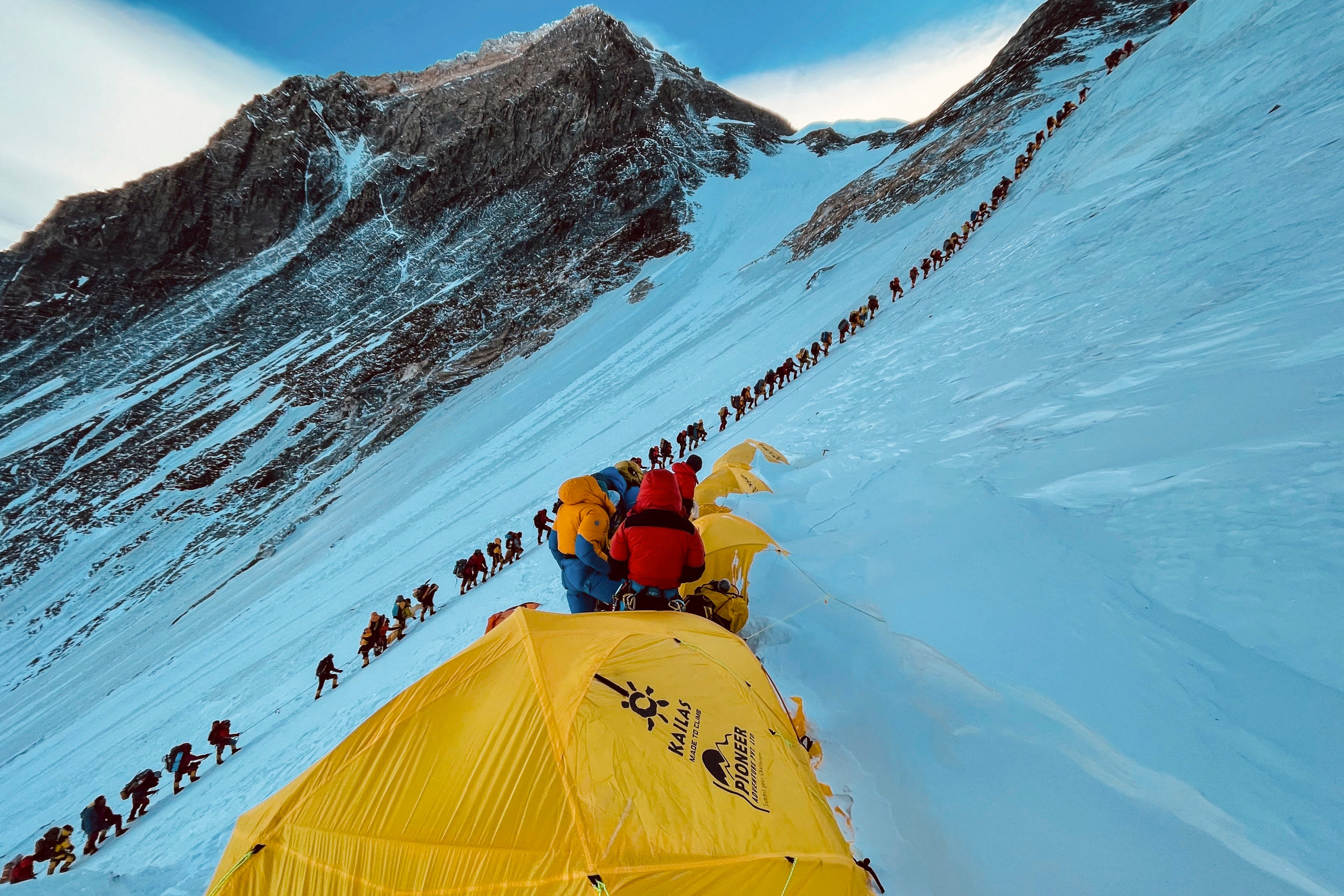Hundreds of trekkers stranded by a blizzard near the eastern face of Mount Everest in Tibet have been rescued and relocated safely, Chinese state media reported, as unusually heavy snow and rainfall pummelled the Himalayas.
Villagers and rescue teams have been deployed to help clear the snow blocking access to the area, which sits at an altitude of more than 4,900m (16,000ft). They relocated the rescued hikers to the small township of Qudang, reports said.
The snowstorm left almost 1,000 trekkers trapped on the mountain, according to Chinese state media.
A trekker, Chen Geshuang, who was part of an 18-member trekking team that safely returned to Qudang, said: “It was so wet and cold in the mountains, and hypothermia was a real risk.”
“The weather this year is not normal. The guide said he had never encountered such weather in October. And it happened all too suddenly,” she told Reuters.
Visitors to the remote valley of Karma, which leads to the eastern Kangshung face of Everest, were in the hundreds this week, taking advantage of an eight-day National Day holiday in China.
However, heavy snowfall began on Friday evening and continued throughout Saturday.
The weather meant entry to the Everest Scenic Area had to be suspended from late Saturday, according to the local Tingri County Tourism Company.
Tibet’s Blue Sky Rescue team had received a call for help saying that tents had collapsed due to heavy snow, and that some hikers were suffering from hypothermia.
The remaining trekkers will arrive in Qudang in stages with the assistance of rescuers organised by the local government, CCTV added.
Ms Chen’s team began descending from the mountains on Sunday and was welcomed by villagers after enduring a harrowing evening of heavy snowfall combined with thunder and lightning.
With tears in her eyes, Ms Chen accepted their offers of sweet tea and the promise of warmth, she said.
“Back in the village, we had a meal and were finally warm.”
It is not known if local guides and support staff had been accounted for and it was also unclear if trekkers near the north face of Everest, also in Tibet, had been affected or not.
The north face of Everest, due to its easy access by paved road, regularly draws large numbers of tourists. October is a peak season, when skies usually clear at the end of the Indian monsoon.

Another trekker, Eric Wen, who survived the blizzard, said they faced continuous snowfall and they decided to head back on Saturday night from their fifth and final campsite.
“It was raining and snowing every day, and we did not see Everest at all,” said Mr Wen.
“We only had a few tents. More than 10 of us were in the large tent and hardly slept. It was snowing too hard.”
Wen said his group had to clear the snow every 10 minutes. “Otherwise our tents would have collapsed,” he said.
It comes as the region faces extreme weather and neighbouring Nepal has been battered by heavy rains, which caused flash floods and landslides that have killed 47 people.
Thirty-five people died in separate landslides in the eastern Ilam district bordering India. Nine people were reported missing after being swept away by floodwaters and three others were killed in lightning strikes elsewhere in the country.
In China, about 150,000 people were forced to evacuate their homes due to destruction caused by Typhoon Matmo.
Direct flights between India and China to begin again after 5-year suspension
Mount Everest rescue live: Race against time to rescue 200 hikers stuck in blizzard
Typhoon Matmo: China evacuates almost 350,000 people as powerful storm makes landfall
Villages swept away and dozens killed as heavy rains cause flooding in Nepal
Landslides kill more than 60 in India and Nepal after days of heavy rain
Internet and phone services resume in Afghanistan after 48-hour blackout







